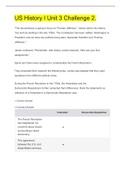College aantekeningen
Services Marketing - Summary of all lectures
- Instelling
- Tilburg University (UVT)
Complete summary of all lectures of the course Services Marketing at Tilburg University in 2020. It includes all the content for the exam!
[Meer zien]













